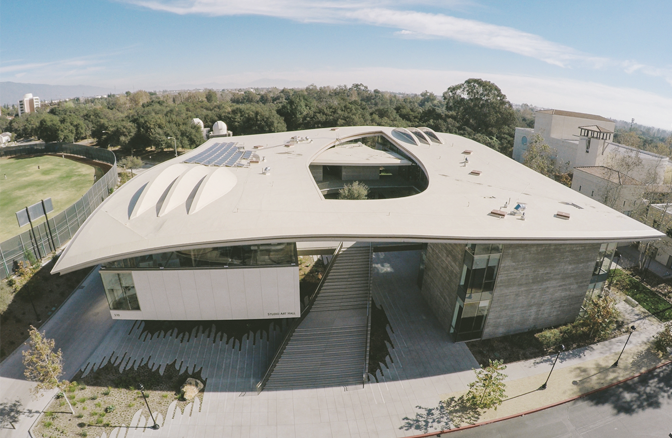Four major factors come together for one tough roofing solution
January 24, 2022—How durable is PVC roofing? So durable that it was chosen for the National Oceanic and Atmospheric Administration (NOAA)’s Hurricane Center located in Miami. This is an organization that knows a thing or two about the abuse extreme weather can exert on roofs. When it came time to cover its own building, the powers that be at NOAA chose PVC.
What makes PVC so durable? The Coated Fabrics and Film Association – Vinyl Roofing Division, the trade association for the material, says it comes down to four major factors: heat-welded seams, combustion resistance, watertightness, and wind uplift rating.
PVC roofing membranes are constructed of a flexible, tear- and water-resistant polymer reinforced with fiberglass non-woven mats or polyester woven scrims. These roofing components ensure PVC’s dimensional stability, durability, and capacity to respond to a building’s normal expansion and contraction and resiliency challenges. It has a track record of performing in every conceivable and extreme temperature condition.
The heat-welded seams of PVC roofing systems are fused together with hot air. These seams form a permanent, watertight bond – regardless of roof slope – that is stronger than the membrane itself. This is a major advantage thermoplastic membranes have over other types of roofing systems that rely on adhesives, tapes, and caulks to seal the seams. No solvent wiping or solvent-based adhesives are necessary for seaming as with alternative roofing systems, nor are torches, open flames or kettles required.
The PVC polymer’s composition gives this roofing material an inherent combustion resistance not found in alternative materials without additives. PVC roofing membranes are difficult to ignite, burn very slowly, and tend to self-extinguish when the flame source is removed. This is in stark contrast to other roofing materials that will continue to support combustion even after the flame source is no longer present. PVC roofs have passed both FM and UL fire testing, achieving unlimited slope approvals.
As a watertight membrane, PVC roofing membranes have been successfully used in waterproofing applications for more than five decades. They are manufactured to remain watertight in extreme conditions, including constant dampness, ponding water, high and low alkaline conditions and exposure to plant roots, fungi, and bacteria.
Properly designed PVC roofing systems provide durability and can meet or exceed the wind uplift requirements needed to obtain FM approvals. Many membranes have survived the onslaught of hurricanes (which brings us back to NOAA), and can be designed specifically for storm-prone climates.For more information visit https://vinylroofs.org/durability/.


